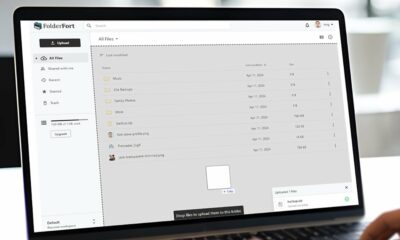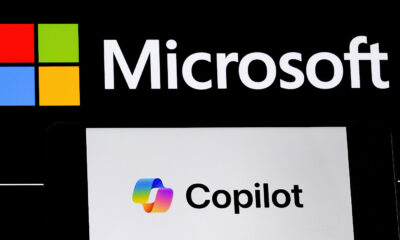SEO
How To Improve Lead Quality Without Backend Data

Integrating backend data into digital marketing initiatives is a gamechanger for performance.
But what can you do when backend conversion data is unavailable or unreliable?
How can marketers optimize lead quality and higher margins without explicit insight into which keywords and audiences have the most value?
This article will walk you through some indirect ways in which you can optimize for lead quality in Google Ads, despite not having the ideal data passback with your digital advertising platforms.
First, let’s review why this is so important.
Why Optimize For Down-Funnel Events Or Margin?
Before we get into strategies, let’s first align on why this even matters. What’s the harm in just optimizing toward a lead event or transaction?
This visualization below is one our agency uses when communicating the need to blend backend data to inform campaign strategy and decision-making.
Note that while this example is specific to B2B, B2C advertisers generally will have a progression toward revenue, as well.
Advertisement
Continue Reading Below
For example, B2C ecommerce could have a Click > Add To Cart > Start Checkout > Create Account > Complete Order flow.
As the above shows, the path to revenue has several milestone stages, including Clicks, Leads, MQLs, Opportunities, and Closed/Won.
Most advertisers these days are savvy enough to realize that optimizing for the lowest cost click/website visit will lead to low-quality, fat tail keywords that don’t produce impact down-funnel.
Advertisement
Continue Reading Below
However, due to the technical hurdles required to blend backend and front-end data, I often find advertisers stopping at leads when optimizing.
Not a big deal? Think again.
Here’s an example that solidifies what an impact shifting your focus lower in the funnel can bring:
-
 Image provided by Closed Loop, December 2021
Image provided by Closed Loop, December 2021
On the surface, Campaign A has far stronger performance when evaluating based on leads.
However, the gap widens lower in the funnel to the point where the cost per sale for Campaign A is over 5x of that of Campaign B.
So, What Do I Do About It?
You should not wait until the ideal state solution is deployed before optimizing toward lead quality.
Offline data can take time to get integrated into Google Ads and other platforms.
However, you can still take meaningful steps to start moving the needle in the right direction while that integration is being worked on.
Before we get into those steps, let’s look at the ideal data state.
The Ideal State Of Backend Data
The ideal scenario for optimizing toward backend data includes:
- Hidden fields are set up on all of your website and native lead gen forms to pass the platform identifier (GCLID, FBCLID, etc.) into your CRM record.
- Offline Conversion Tracking (OCT) integrated fully into Google Ads and other supporting channels (Microsoft Ads, Facebook, LinkedIn).
- Values calculated and assigned to each conversion point.
- Value-based bidding enabled in-platform.
- Backend data blending across channels via a daily, automated CRM export (assuming not all ad platforms you are running on support data passback) to enable cross-channel, full-funnel reporting.
While this may sound straightforward, my experience is that it takes many advertisers a long time to get to this point, given the need to involve stakeholders from multiple departments.
Here are tangible steps you can take to optimize for down-funnel events while the ideal state is being worked on.
Advertisement
Continue Reading Below
Stage 1: The Low Hanging Fruit
Perceived Keyword Intent
When optimizing to lead, the search terms that trigger said lead will vary greatly in quality.
Assuming limited budgets and a desire to improve down-funnel results, you should evaluate keywords (and campaign budget allocation) based on perceived intent, as well as tangential signals that identify quality, such as engagement signals ported in from Google Analytics.
If share of voice (SOV) is lower-than-ideal for strongly performing, high perceived intent terms, consider decreasing exposures on terms with a low perceived intent or poor tangential signals.
Don’t let higher cost per lead numbers scare you.
If you identify keywords with higher perceived intent, despite higher cost per lead, consider adding an “intent multiplier” for leads triggered from certain keywords and audiences.
Pro-tip: Apply labels when making adjustments so that you can easily filter for changes made at specific points in time.
This will enable you to make updates quickly to that data set in the future (e.g. If your monthly budget increases and it makes sense to activate a tranche of keywords previously paused).
Advertisement
Continue Reading Below
Pre-Qualify The Click
Marketing 101 tells us that the higher the CTR is, the more aligned your targeting and messaging are.
However, one should not blindly optimize in efforts to maximize CTR.
Your ad copy is one of the easiest levers you have at your disposal when trying to improve the quality of your leads.
Think through the attributes that make up a high-quality lead, then tailor your ads to speak to those personas.
For example, if you are a B2B advertiser attracting enterprise IT prospects in the Retail vertical, call out things like “Enterprise IT Solution for Retail” in your headline.
Tailoring will decrease the ad’s relevancy for some searchers.
However, you’ll free up the budget for audiences better aligned.
By clearly identifying who your product or service is for in the copy, you’ll weed out those who aren’t good fits, such as SMBs and manufacturing companies.
Utilize Audience Layers
Google Ads has a wide range of affinity, in-market, detailed demographic, and custom audience options available to advertisers.
Advertisement
Continue Reading Below
By applying audience layers to your campaigns, you can bid up or down (manual bidding) or include or exclude via RLSA campaigns.
Stage 2: Leverage First-Party Data For Audience Building
Regardless of whether your CRM is connected to your advertising platforms, it still holds customer and prospect records that are highly valuable to you as a marketer that you can extract.
Here are three ways you can fully leverage that data.
Nurture Using CRM Data
You can improve down-funnel lead quality – especially in sales funnels that extend beyond a few days – via lead nurture initiatives across display/programmatic, YouTube, social, and search.
A marketer’s job does not stop at the lead stage.
An organization must stay top of mind throughout the entire buyer’s journey.
Marketers should be working with sales in evaluating (often via a lead scoring system) which leads in their system have promise.
Then ensure that they and the organization’s buying committee (via ABM), are being saturated with both brand and thought leadership content to keep you top of mind and to build more authority.
Advertisement
Continue Reading Below
Marketers should also collaborate with sales to evaluate promising leads (using a lead scoring system) and ensure they, including the organization’s buying committee (via ABM), are nurtured with content marketing to maintain brand awareness and industry authority.
While Google does not offer ABM solutions, you can target specific companies and functions within said companies via the Microsoft Audience Network, LinkedIn, and other providers.
List Building Using CRM Data
Major ad platforms offer list upload options (via phone, e-mail, or mobile app ID) to seed Similar To/Lookalike audiences.
By thinking through your list upload segments, you can target people who have attributes similar to your most valuable lists (e.g. top customers).
On the flip side, you can upload lists for groups of low-quality prospects and customers, then exclude them from your targeting (all bid strategies) or bid down if using a manual bid strategy.
You don’t have to use that list for explicit targeting. It can also glean insights into your customer base or as a seed list for Similar To or Lookalike audience creation (keep reading!).
Advertisement
Continue Reading Below
Target Modeling Using CRM Data
In addition to explicitly targeting and/or creating a lookalike-based audience using a list upload, both Google Ads and LinkedIn have audience insight tools that can help you identify additional audience segments that align with your best and worst customers.
In Google Ads, head over to your Shared Library > Audience Manager > Your Data Insights.
Here, you will be able to select an audience (upload, pixel, YouTube-based), then see how that audience indexes against a control group (e.g., US population; Bad lead list) across dimensions like age, gender, parental status, location, device and most importantly, Google affinity and in-market segments.
Here’s a look at that report, using a “Closed/Won” list:
-
 Screenshot from Google Ads, December 2021
Screenshot from Google Ads, December 2021
-
 Screenshot from Google Ads, December 2021
Screenshot from Google Ads, December 2021
Once you have some insights, you can decide how best to apply the insights across your campaigns. This could be via bid adjustments, value rules, inclusions (RLSA), or exclusions.
Advertisement
Continue Reading Below
TL;DR: Use Customer Match uploads to feed Google Ads (and beyond) your customer data, then utilize that data through inclusions, exclusions, and attribute modeling.
Pro-tip: While you can manually upload lists to platforms, consider tools like Zapier, Salesforce Advertising Studio, and Liveramp to automate this update process better and improve match rates.
Stage 3: Use Conversion Values To Inform Bidding
The holy grail to strive for is OCT-based conversion points + value-based bidding. Even without OCT data, using value signals in your bidding decisions can still be a net win for performance.
Here are three steps to maximizing conversion value usage.
Step 1: Assign Values To Each Conversion Point
Don’t worry about providing the system with a perfect value when getting started. The goal is to establish values that will nudge the algorithms in the right direction.
Down the road, these values should be based on the value multiplied by the conversion rate from that action to the transaction.
Step 2: Test Into Value-based Bidding (Max Conversion Value/tROAS)
Advertisement
Continue Reading Below
When first getting started, you should set your tROAS targets equal to the CPA of your legacy bid strategy.
The goal here is to shift to value-based bidding without undue volatility and then start improving efficiency and/or scale by adjusting tROAS target.
Step 3: Use Value Rules
New to Google Ads in 2021, this feature allows you to add, subtract and multiply any conversion value based on audience, device or location.
For example, imagine I want to target enterprise IT decision-makers but don’t have OCT, so lack visibility into what drives performance beyond the lead.
Even without backend data, I intuitively know I want the algorithms to:
- Bid higher if in a Similar To audience based on-site engagement.
- Bid higher if Google buckets them into an In Market: Enterprise Software bucket.
- Bid higher for those who work at enterprise companies.
- Bid higher for those located in San Francisco, CA.
- Bid lower if they work at a small company.
Translating that into value rules looks something like this:
-
 Screenshot from Google Ads, December 2021
Screenshot from Google Ads, December 2021
With value rules, you can use tools like Google Ads Data Insights along with findings pulled from LinkedIn Detailed Demographics reports, first-party personas, and customer data to tell the algorithms to serve ads to those prospects of higher quality.
Advertisement
Continue Reading Below
Wrapping Things Up
Integrating first-party data to inform audience building and bidding should be at the top of your priority list.
Incorporating backend conversion data via OCT can be challenging, but it is a worthy endeavor to strive toward.
Remember these methods when improving lead quality without using OCT while you lay the groundwork for direct data passback.
More resources:
Featured Image: Brovko Serhii/Shutterstock


















You must be logged in to post a comment Login